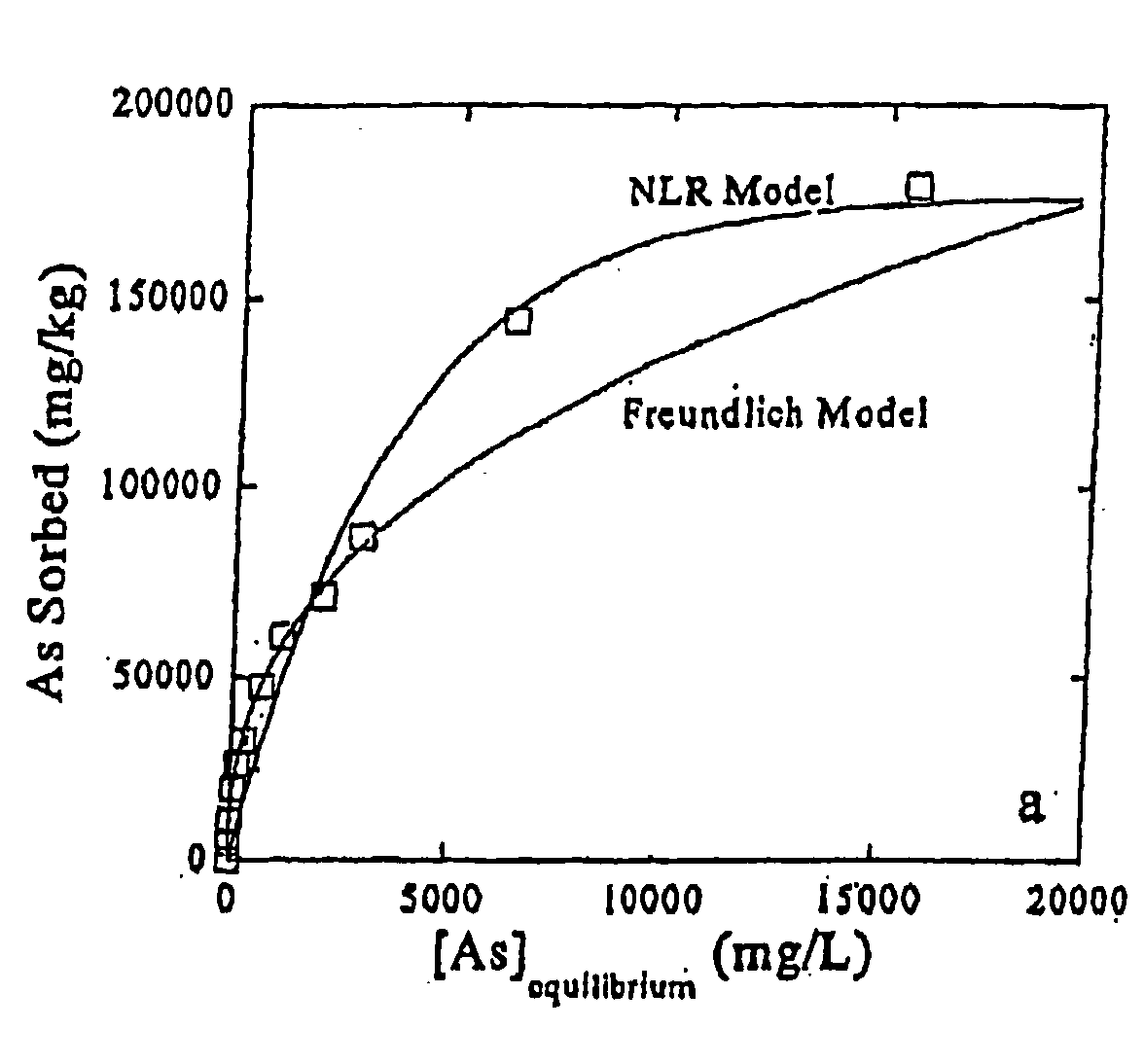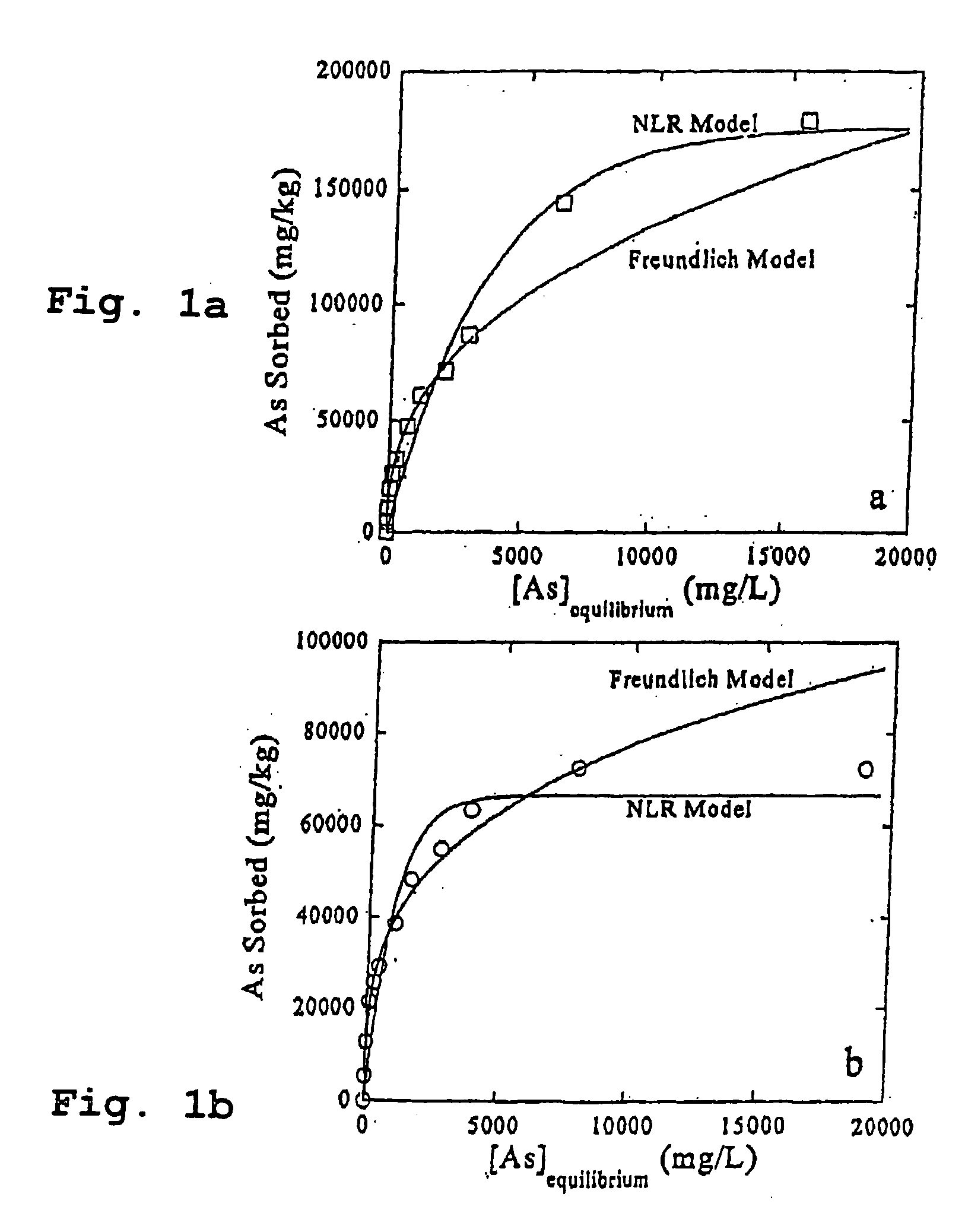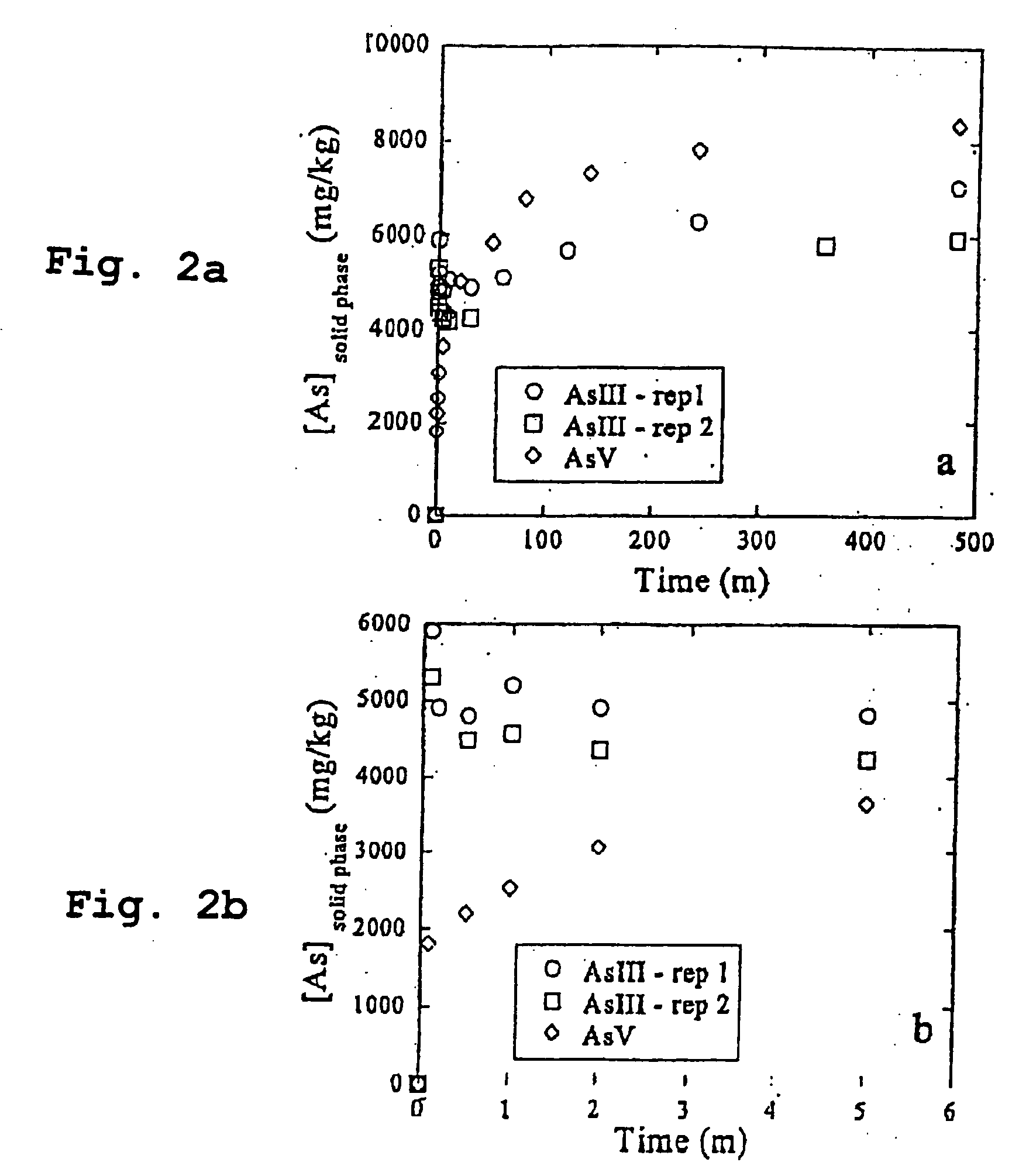Ruthenium based contaminant sorbents and oxidizers
a technology of ruthenium based sorbents and oxidizers, applied in the field of ruthenium compounds, can solve the problems of heavy metal contamination in water, soil, sediment, and rarely achieve more than a few weight percent lead per unit weight of sorbent, and the fraction of a percent desorbed with respect to the total amount of lead sorbed, etc., to achieve high-efficiency effects
- Summary
- Abstract
- Description
- Claims
- Application Information
AI Technical Summary
Benefits of technology
Problems solved by technology
Method used
Image
Examples
Embodiment Construction
[0034] Ruthenium compounds can be used for removing and oxidizing inorganic and organic compounds as well as elements in water, wastewater (domestic and industrial), solid, sediments, and solid waste. The ruthenium compounds can be used in large commercial scale or small private applications, e.g., point of use treatment. The ruthenium compounds can be used alone or in combination with other absorption / precipitation treatment systems or in combined treatment systems.
[0035] Ruthenium compounds that can be used for soil or water remediation according to the present invention include: [0036] RuO2.xH2O where x denotes the degree of hydration (typically x=0 to 3) [0037] 2. Mixed precipitates [0038] Ru—Fe oxyhydroxides,—(Fex,Ru1-x)OOH [0039] Ru—Fe hydroxides,—(Fex,Ru1-x) (OH)n [0040] Ru—Fe oxides,—(Fex,Ru1-x)On [0041] Ru—Mn oxyhydroxides,—(Mnx, Ru1-x) OOH [0042] Ru—Mn hydroxides,—(Mnx,Ru1-x) (OH)n [0043] Ru—Mn oxides,—(Mnx,Ru1-x)On [0044] Ru—Al oxyhydroxides,—(Alx,Ru1-x)OOH [0045] Ru—Al ...
PUM
 Login to View More
Login to View More Abstract
Description
Claims
Application Information
 Login to View More
Login to View More - R&D
- Intellectual Property
- Life Sciences
- Materials
- Tech Scout
- Unparalleled Data Quality
- Higher Quality Content
- 60% Fewer Hallucinations
Browse by: Latest US Patents, China's latest patents, Technical Efficacy Thesaurus, Application Domain, Technology Topic, Popular Technical Reports.
© 2025 PatSnap. All rights reserved.Legal|Privacy policy|Modern Slavery Act Transparency Statement|Sitemap|About US| Contact US: help@patsnap.com



